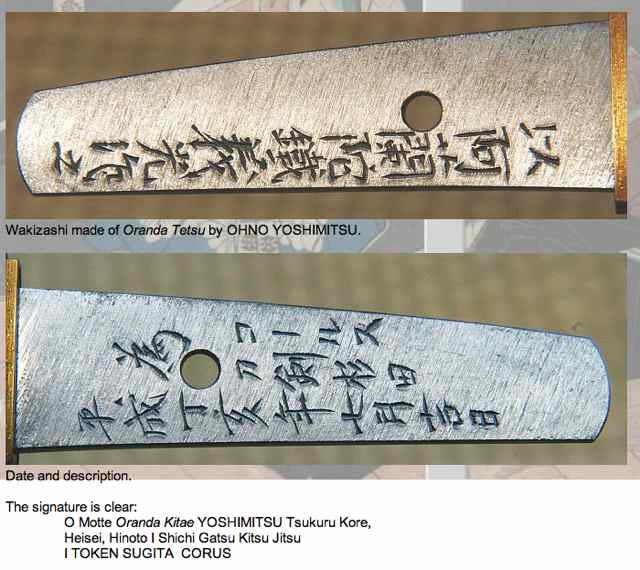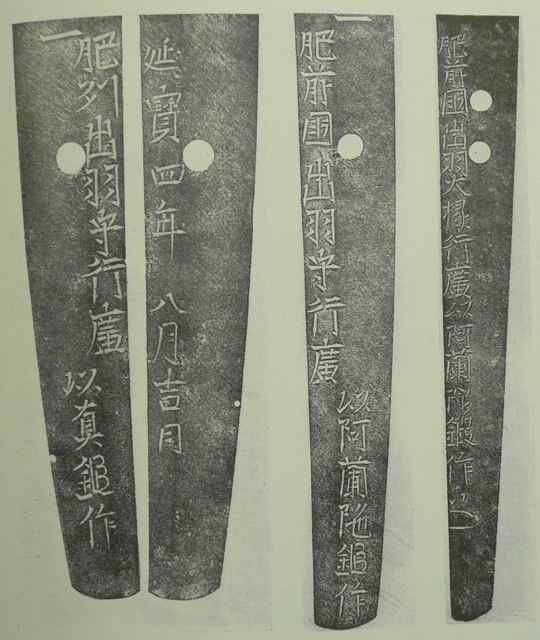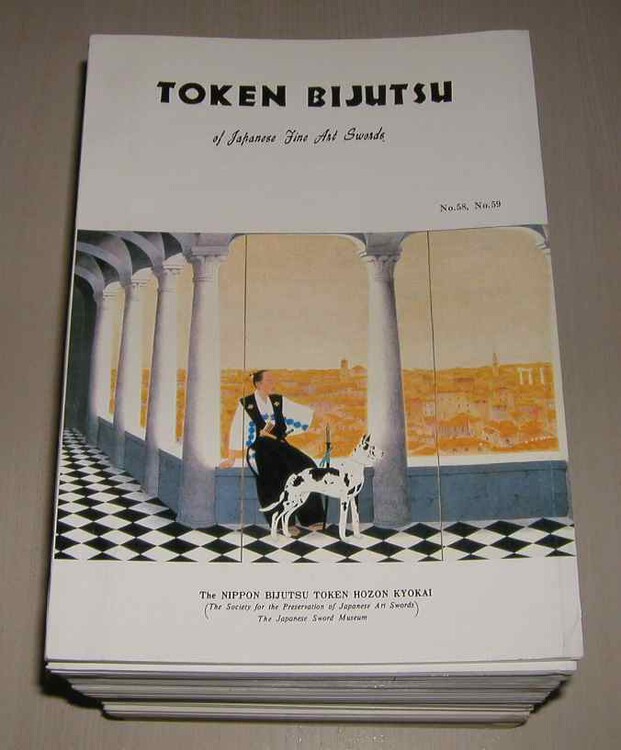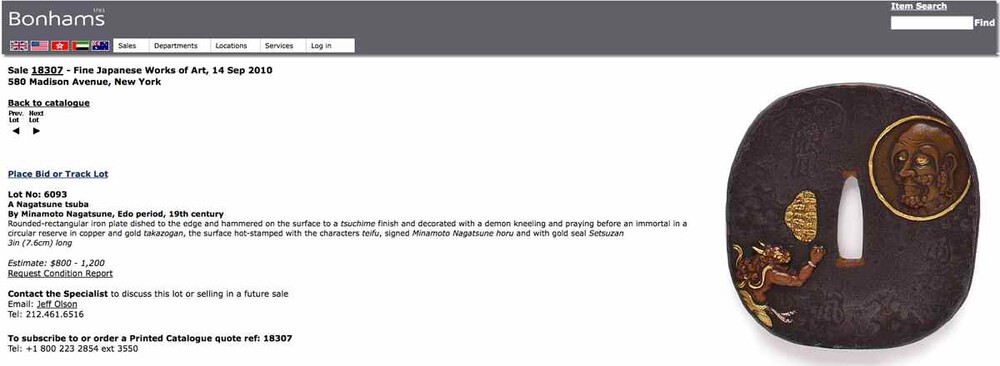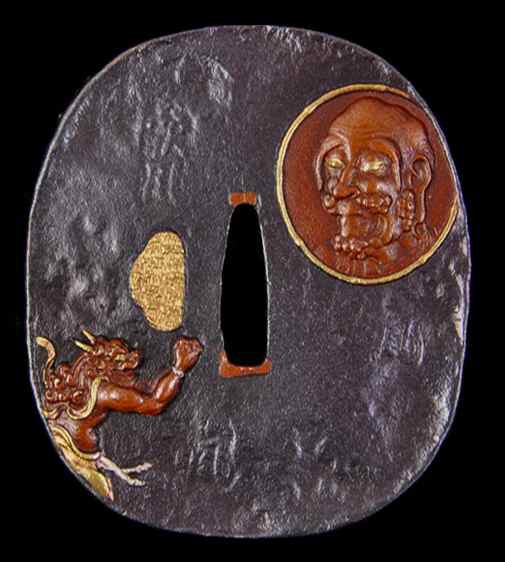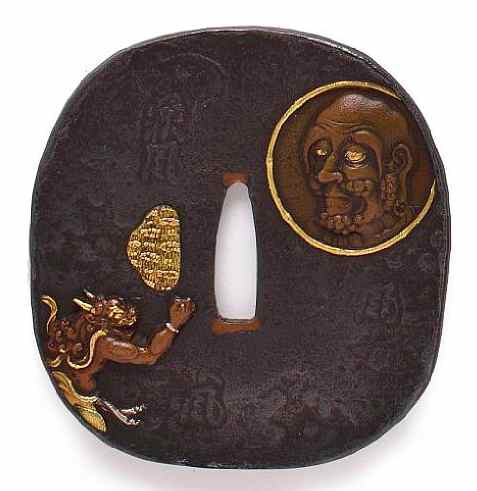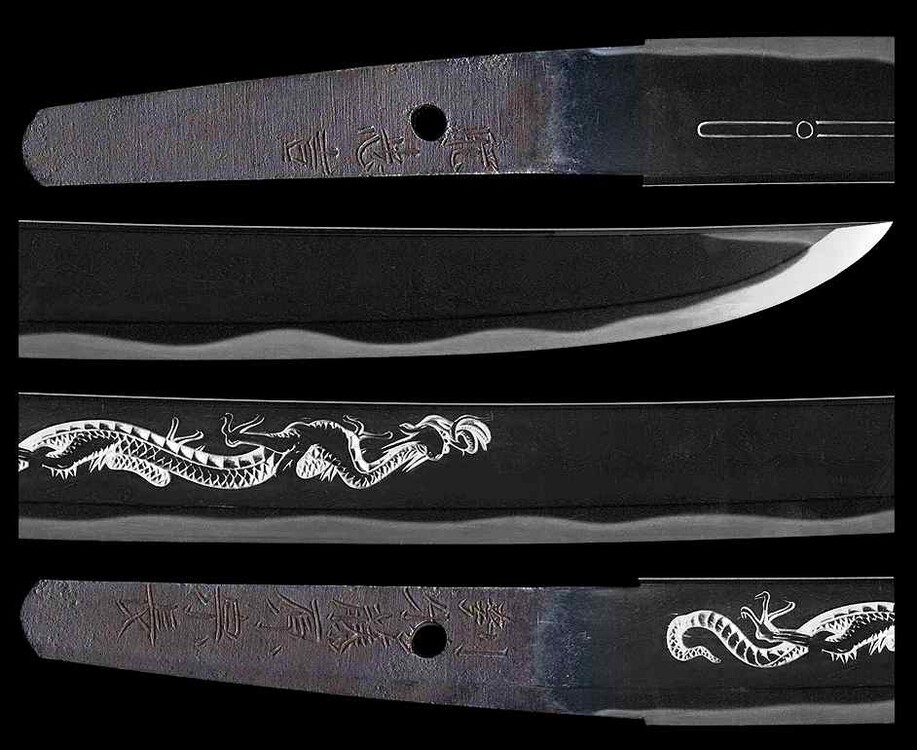-
Posts
1,029 -
Joined
-
Last visited
Content Type
Profiles
Forums
Events
Store
Downloads
Gallery
Everything posted by Eric H
-
B.W. Robinson... Who feels called upon to fill his shoes must bring big feet! Where are the candidates of this Board who are willing to try?...please report Eric
-
In 2006 a very interesting study „NAMBAN TETSU PROJECT“ was published under the patronage of Mr. L. Duindam and Token Sugita. Going back to the roots of Namban-tetsu, two swordsmith, Yukimitsu and Ono Yoshimitsu performed a Tanto and a Wakizashi using Namban-tetsu especially prepared for this project. I enclose the mei‘s of the respective swords YUKITMITSU TANTO mei „Yukimitsu namban tetsu wo motte saku“ ONO YOSHIMITSU WAKIZASHI mei „o motte Oranda kitae Yoshimitsu tsukuru kore“ why did Ono Yoshimitsu use „Oranda kitae“ instead of „namban tetsu“? ...but perhaps by the same reasoning as Hizen Yukihiro. Thanks Carlo Eric
-
Hi Carlo, Folding times and layers are two different things as you well know. In modern swordsmithing the first six foldings are called shita-gitae, they are followed by additional foldings, but as I remember that should not exceed 15 or 18 folds at maximum, for the steel gets weak and looses the pattern, hence a loss of its quality...this is valid of course also for old Nihonto. Normally a sword has around 32000 layers. But maybe I have misunderstood something. Eric
-
Jigane 地鉄 “iron folded 100 times.” Eric
-
Motte Oranda-kitae saku is sometimes inscribed on his blades, not Oranda-tetsu...but one could also deduce that Oranda-kitae saku implies logically the use of Dutch iron, oroshigane...a marketing ploy for better selling his swords?...perhaps...but in this case why not regularly inscribed on his swords? Regrettably I haven‘t found examples by Hisatsugu or Tanenaga to reveal an evidence. The other question is: what about Dutch forging methods? What did they, the Dutch, forge, surely not swords BTW Japanese sources use to write: He used Holland iron for making his swords. Sometimes we find swords as mentioned on the tang as used Holland steel. Yukihiro oshigata from Fujishiro with...motte Oranda... Eric
-
THE ART OF THE Japanese SWORD B.W. Robinson available second hand recommended, as far as I know it is what B.W. Robinson has translated from Honami Konson‘s Book THE Japanese SWORD A COMPREHENSIVE GUIDE Kanzan Sato, Translated by Joe Earle recommended THE CONNOISSEUR‘S BOOK OF Japanese SWORDS Kokan Nagayama, Translated by Kenji Mishina recommended, very elaborate, though some illustrations are to small to see the details THE CRAFT OF THE Japanese SWORD Leon and Hiroko Kapp, Yoshindo Yoshihara recommended, a must, the manufacturing of a sword from A to Z FACTS AND FUNDAMENTALS OF Japanese SWORDS A COLLECTOR‘S GUIDE Nobuo Nakahara, Translated by Paul Martin recommended, clearly as it states with facts but also some unorthodox views but with additional explanations by Paul Martin TOKEN BIJUTSU ENGLISH EDITION - 1979 - 1993 highly recommended, the academic approach to the understanding of the Japanese Sword Eric
-
-

Can "high end" coexist with "low end" ?
Eric H replied to estcrh's topic in General Nihonto Related Discussion
Clive (Sinclaire)?, no, it is T. Sinclair... just to be correct Eric -
It is known that Yukihiro has worked with Namban-tetsu and now I have found an article that states his relation to shodai Tadayoshi. Hizen Yukihiro was born in 1617 and was named Kurobei. He is the younger brother by 11 years to Shodai Hizen Masahiro, and his grandfather by way of adoption of his father Yoshinobu, is Shodai Hizen Tadayoshi. His first work is known to have been made in 1639 at the age of 23. His first title, Dewa no Daijo came at age 32 around the time when he began experimenting with Oranda Tetsu ( = Holland steel and Dutch manufacturing techniques) under the sword smiths Hisatsugu and Tanenaga in Nagasaki. In 1663, he was granted a promotion to Dewa no Kami, and two years after this his elder brother Masahiro passed away. That leaves room for speculations. Eric
-
Arnaud, Lee, for the informations...but now let's go back to the topic. Eric
-
However there are dealers, shops: Espace 4....http://espace4.com/ Nihon Antiquaire....http://www.nihonantiquaire.com/g2zmenu.php?idPage=17 Japon Antique Objets D'Arts Du Japon-Armes, Armures Louvres des Antiquaires 75001 Paris Tel:01-42-61-56-88 Eric
-
Hizen Dewa no Kami Yukihiro shodai, he used Namban-tetsu Yukihiro was a swordsmith of Hizen province. He was the Second son of Hashimoto Yoshinobu. Yukihiro got the title of Dewa Daijo in 1648 and ranked up to Dewa (No) Kami in 1663. He went to Nagasaki to learn under Hisatsugu and Tanenaga who were well informed about western steels brought by the Dutch. Later he became a retained swordsmith of the Nabeshima family and lived in Nagase town. He passed away in 1683, aged 66. Eric
-
Gentlemen, This was just for fun as a little exercise... :lol: ...the pictures vary in quality for serious judging. XX - top this Tsuba is unsigned, modern age, with gold seal, aorigata, and was up for auction recently. X - bottom this Tsuba is signed Minamoto Nagatsune horu with gold seal Lot No 6093 Bonhams Sale Bonhams Sale 18307, New York 14 Sep 2010 http://www.bonhams.com/cgi-bin/public.s ... leNo=18307 Thanks for the replies Eric
-
Paul, it wasn‘t my intention to criticize or to revise your remarks referring to both auctions...my aim was to reveal the fact that before NBTHK was established, no papers existed in the form as nowadays, whereas the Compton mumei swords then became Origami. Due to the fact that few people outside of Japan are experts to point down a good mumei blade... of course in perfect condition...exactly to period, school, smith, therefore it is for the benefit of the average collector to have an attribution of mumei blades issued by NBTHK, NTHK etc. On the other hand, a mumei sword without Origami is a splendid object for speculations by its owner and other „experts“...a doubtful perspective. Kantei is easy... ... an article by John Kurrasch, but it‘s a field full of perils. Chris Bowden f.e. has participated in numerous Kantei...his judgements are well respected... and this is the only way to get deeper knowledge on swords, they must be hold in hands and thoroughly inspected. Sword organizations offer the same opportunity. Eric
-
-
Referring to the Christie‘s auctions IMPORTANT SWORDS FROM THE MUSEUM OF Japanese SWORD FITTINGS: The registration committee in those early days was chaired by the late Dr Junji Homma, and consisted of recognised sword specialists. Interestingly, those early registration documents often have handwritten attributions and notes relating to the provenance of the swords, and are therefore important records in their own right. These were early days before the kanteisho system was fully established. when it comes to the mumei swords of the COMPTON COLLECTION they are papered. This might be true, but I believe they don't disclaim to an authentication paper when it is an important sword, isn't it? Eric
-

S F Show
Eric H replied to tetsugendo11's topic in Sword Shows, Events, Community News and Legislation Issues
Beautiful Tsuba...silver or rogin? Eric -
This crap has been sold for US $ 610.--, 28 bids ...the question may be raised how educational is our board?...or more specifically, do people learn effectively? In several threads there has been a serious warning to buy from ebay by uninformed people. The seller, using a lot of technical terms in the boastfully description... he doesn't obviously not understand their meaning... merely wishful thinking... the pictures however unmask such maneuvers. The „happy“ new owner...hopefully not a member... has the choice now, will it be polished...or left alone as an „artefact“ or perhaps as a prime example for flaws. Eric
-
...as well as shodai Tadayoshi This type of katakiriba zukuri became popular from the start of the Shinto period, but is rarely found in later times. Eric
-
Thank you for sharing Eric
-



